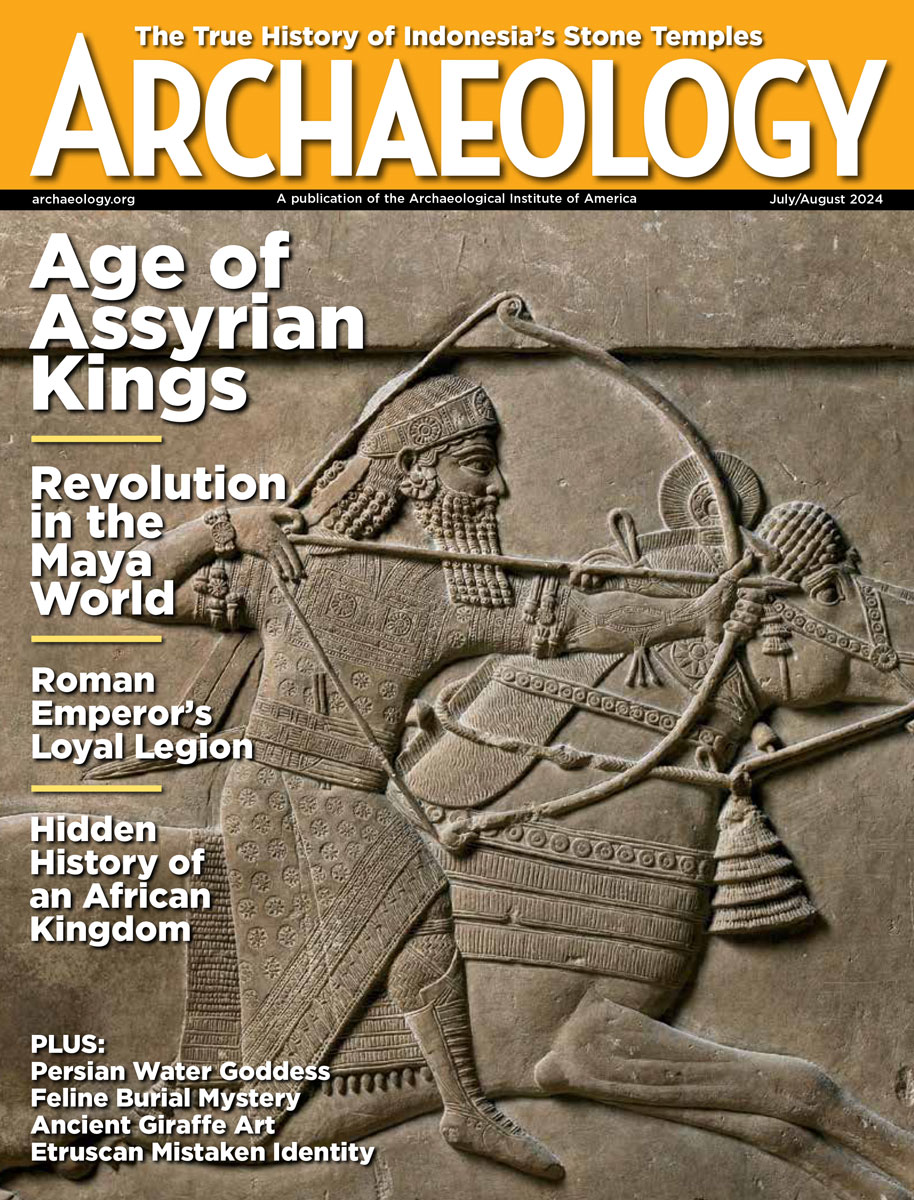

| |
| The Wreck of the Mermaid | Volume 61 Number 5, September/October 2008 |
| by James P. Delgado | |
Hunting for Russalka, the Czars's lost ironclad
![[image]](thumbnails/mermaid1.gif)
Estonian maritime archaeologist Vello Mäss illuminates the propeller of Russalka (Russian for "mermaid"), a 19th-century Russian ironclad that now rests on the bottom of the Baltic Sea between Estonia and Finland. (Photo Courtesy of Kaido Peremees)
Alone in the darkness, the only sounds I can hear are my own breath and the occasional crackle in my earpiece. Encased in a thick suit, my entire head covered in a face mask and hood, my skin still feels the cold, and I experience just a trace of subconscious dread as my gloved hand slides along the thick rope that guides my slow descent into the depths of the Baltic Sea.
Some 240 feet below me is the muddy seabed, but my target is the tip of a sunken ship's stern, rising 108 feet from the bottom. Some of the cold may not be from the water, but from the realization that the ship sank with 177 hands. Not one survived, and the last hours of the ironclad Russalka have remained a mystery since the vessel was lost in 1893.
![[image]](thumbnails/mermaid2.gif)
One of 29 ironclads in the Imperial Russian Navy, Russalka had two revolving gun turrets that made it a formidable warship. But its design was top-heavy and gave the vessel only two-and-a-half feet from the waterline to the deck—a dangerous combination that doomed Russalka and its crew. (Photo Courtesy of Estonian Maritime Museum, Mark Pike, Eco-Nova Productions, Ltd.)
Thanks to the perseverance of one man, Estonian maritime archaeologist Vello Mäss, the secrets of Russalka are at last being revealed, and I'm lucky enough to be one of a handful of divers joining Mäss and his diving partner Kaido Peremees in a series of descents to one of the Baltic's—and the world's—most incredible shipwrecks.
Russalka lies deep, and I have only a matter of minutes to see what I can on this dive before I start a slow return to the surface. Compounding the always present risk of decompression sickness, or "the bends," is the fact that we're anchored in the middle of the open sea, far from land, in an active shipping lane. The wreck itself is draped with a snarl of fishing nets that can trap and drown an unwary diver. I snap on my dive light and sweep it down. The dim flash illuminates the outline of a four-bladed propeller, its bronze still shiny despite more than a century of immersion. The waters of the Baltic corrode copper alloys slowly, but then my light picks out Russalka's massive iron rudder. The once black metal is bright orange, caked thick with rust.
![[image]](thumbnails/mermaid3.gif)
The author, left, and Vello Mäss monitor diver Mike Fletcher as he descends to Russalka. Difficult diving conditions at the site mean that safety protocols must be strictly observed. (Photo Courtesy of James P. Delgado)
I shoot a blast of compressed air into my suit to slow my fall, and gently touch down, my open hand grabbing Russalka's hull. I balance, nearly weightless, on the very tip of the stern, pivoting like an astronaut in the blackness of space. My light picks out the curve of the hull that continues down another hundred feet, and then briefly shines on a second propeller on the other side of the rudder.
I know that since none of Russalka's crew survived, most of their bones must lie entombed in the rusting iron coffin that was once their ship. Finding out just what happened to them, why their ship sank, and what we can learn about the once cutting-edge ironclad technology is why we are here.
Russalka's final resting place was unknown for more than a century, and the mystery of how and why the warship sank has plagued both descendants of its crew and scholars. Some blamed neglect and inadequate maintenance of the ship by authorities, while others pointed to the crew's blind obedience to orders in the face of dangerous conditions.
James P. Delgado is president of the Institute of Nautical Archaeology at Texas A&M University.
- See also our in-depth interview with Vello Mäss, "Under the Baltic."
Advertisement

Advertisement






